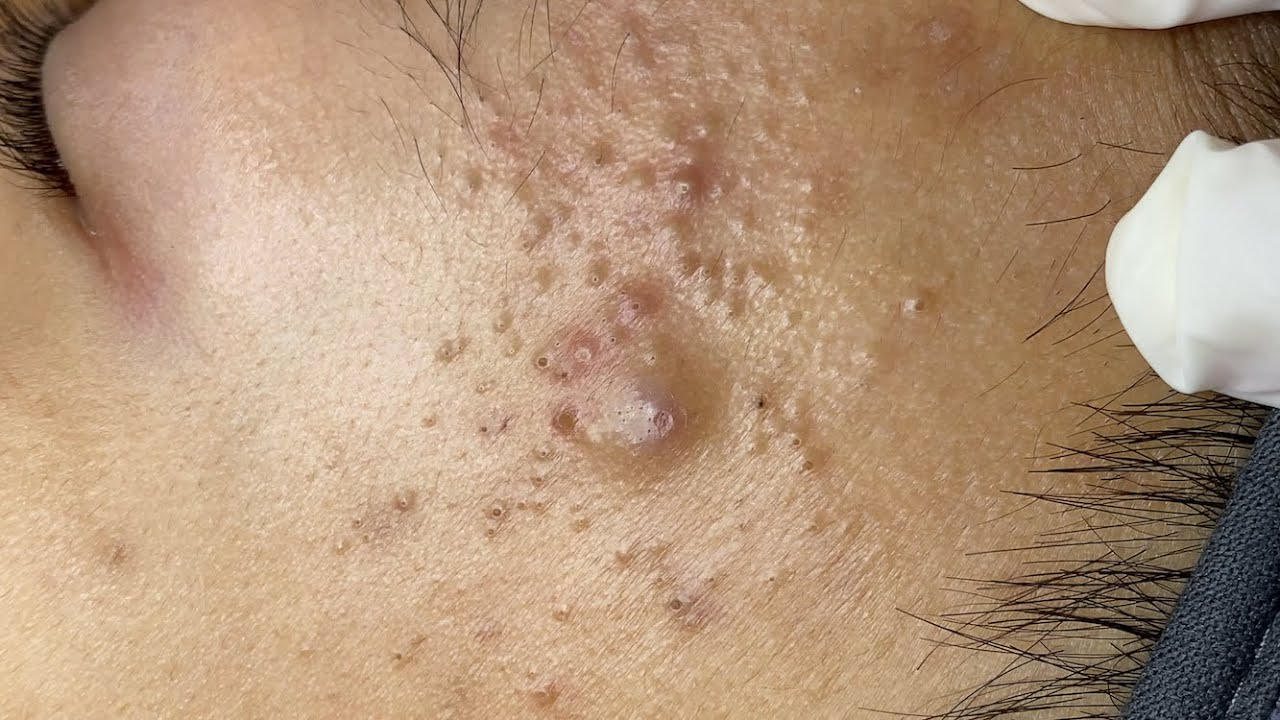Click Button Play To Watch Full Video 👇👇
Acne is not just a skin condition; it can be a window into your overall health. According to dermatologists, the location of your acne can reveal underlying issues, ranging from hormonal imbalances to dietary factors. Understanding these patterns can help you take steps to improve your skin and overall well-being.
Forehead
Acne on the forehead is often associated with stress and hormonal changes. This area, part of the T-zone, tends to produce more oil, making it prone to breakouts. Stress triggers the body to produce more cortisol, which can lead to increased oil production and clogged pores. Additionally, breakouts here might be related to poor hygiene or the use of hair products that contain heavy oils. To combat forehead acne, try to manage stress through relaxation techniques, maintain a consistent skincare routine, and be mindful of the products you use in your hair.
Nose
Nasal acne can indicate issues with digestion or elevated stress levels. The nose is rich in sebaceous glands, which produce oil, making it a hotspot for acne. Breakouts in this area can also be related to hormonal changes, particularly in women during their menstrual cycle. Maintaining a balanced diet, rich in whole foods and low in processed sugars, can help improve digestion and skin health. Regularly cleansing the face to remove excess oil is also essential.
Cheeks
Acne on the cheeks can often be attributed to environmental factors, such as pollution or irritants from makeup and dirty phone screens. It may also suggest underlying respiratory issues or allergies. Cheek acne can sometimes be linked to hormonal imbalances, especially in women. To reduce breakouts in this area, keep your face clean, limit contact with irritants, and consider switching to non-comedogenic makeup products that won’t clog pores.
Chin and Jawline
Breakouts on the chin and jawline are commonly associated with hormonal fluctuations, particularly in women. Conditions like polycystic ovary syndrome (PCOS) can cause increased androgen levels, leading to acne in this area. It can also be triggered by dietary factors, such as high dairy or sugar intake. To address chin and jawline acne, hormonal therapies or lifestyle changes may be necessary, including dietary modifications and stress management techniques.
Back and Shoulders
“Backne,” or acne on the back and shoulders, is typically caused by friction from clothing, sweat buildup, or hormonal changes. This area is often overlooked but can be a significant source of frustration for many. To prevent back acne, wear loose-fitting clothing, shower after sweating, and consider using specialized body washes that target acne.
Conclusion
While acne can be a source of discomfort and frustration, paying attention to its location can provide valuable insights into what might be happening inside your body. From stress and hormonal fluctuations to dietary issues and environmental factors, the reasons behind your breakouts can vary widely. Consulting with a dermatologist can help you pinpoint the causes and develop an effective treatment plan. By addressing both the symptoms and the underlying issues, you can work toward achieving clearer, healthier skin and enhancing your overall health.
